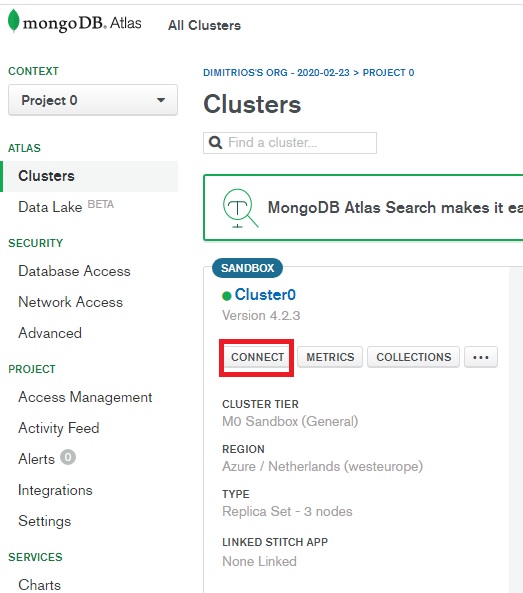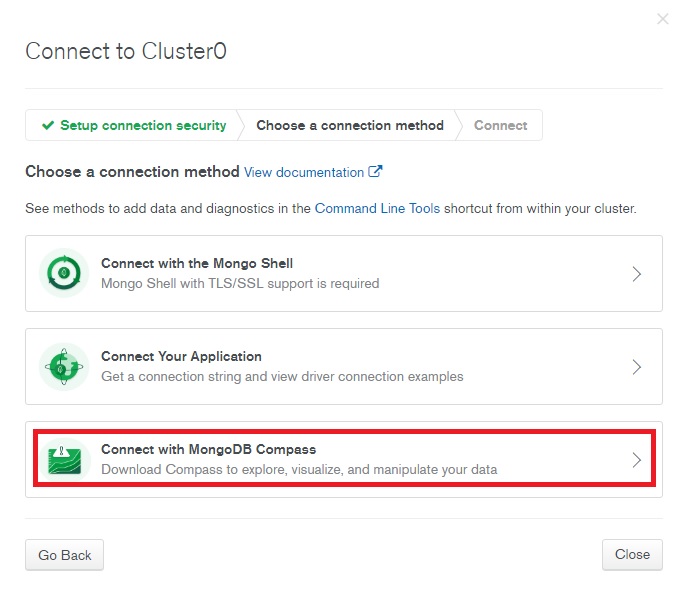

- Mongodb compass create local database how to#
- Mongodb compass create local database install#
- Mongodb compass create local database trial#
Mongodb compass create local database how to#
How to Connect Your #MongoDB Deployments to Robo 3T GUI at ScaleGrid Click To Tweet Connecting to a Standalone MongoDB Deployment For simplicity’s sake, we will use the “dbuser” user we just created to connect to Robo 3T. With the prerequisites in place, we can now go to the Robo 3T GUI to continue to connect to our database deployment. On the MongoDB web-shell, type in the create new user command as shown in the image above and below: use adminĭb.createUser()įor creating users with more advanced roles and permissions, refer to the MongoDB Add Users tutorial, MongoDB roles guide or our guide to MongoDB RBAC. You can use the ScaleGrid web-shell available on the Admin tab to create such a user: For this example, we will create a new user who has read-write access to any database on the cluster.

Users created on the admin database with All-Database roles provide privileges which apply to all non-system databases of the deployment.

Then select the Users tab and click on the New User button:įill in the new user’s name and password, then select its role and click Create: Then, click on the Manage button beside the database you want to create the user on: In order to create simple, per-database, read-write or read-only users, log into the ScaleGrid console, navigate to the cluster details page, and click on the Databases tab. We will show you two examples of creating MongoDB users here from the ScaleGrid console. The roles that you choose to assign to the user will depend on your exact use-case. Instead, create a new user with appropriate permissions for client access. We do not recommend connecting to your MongoDB deployment using the “admin” user that ScaleGrid provides by default. The latest version of Robo 3T at the time of writing this is 1.2, which supports MongoDB versions up to 3.4.
Mongodb compass create local database install#
It’s very important to check your ScaleGrid deployment to ensure you install the Robo 3T version that supports the deployment’s current MongoDB version, and you can check this link for more information on Robo 3T’s supported platforms.
Mongodb compass create local database trial#
For new ScaleGrid users, create a free 30-day trial account and set up your first MongoDB cluster (Robo 3T supported on all plans). You can either create a new instance, or pick an existing instance which has access to the ScaleGrid MongoDB cluster you’d like to connect to. The first thing we need to do is identify a machine to install Robo 3T. This open source tool has cross-platform support and actually embeds the mongo shell within its interface to provide both shell and GUI-based interaction.Īs a highly-popular GUI leveraged by our MongoDB hosting customers, we’re providing this tutorial on how to quickly connect your ScaleGrid deployment with Robo 3T. Robo 3T (formerly Robomongo) is a popular desktop graphical user interface (GUI) for your MongoDB hosting deployments that allows you to interact with your data through visual indicators instead of a text-based interface.


 0 kommentar(er)
0 kommentar(er)
